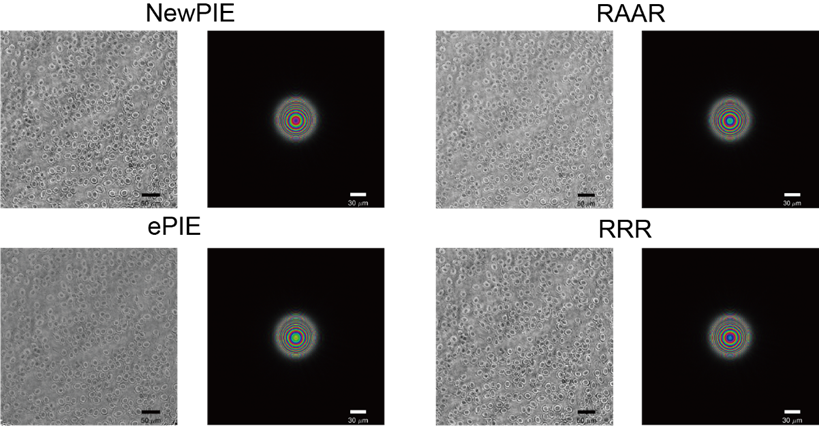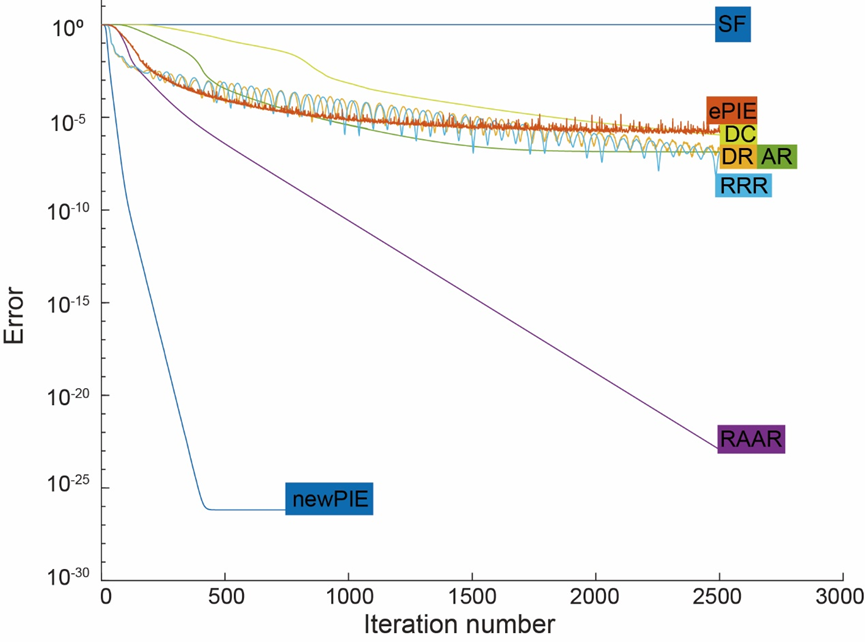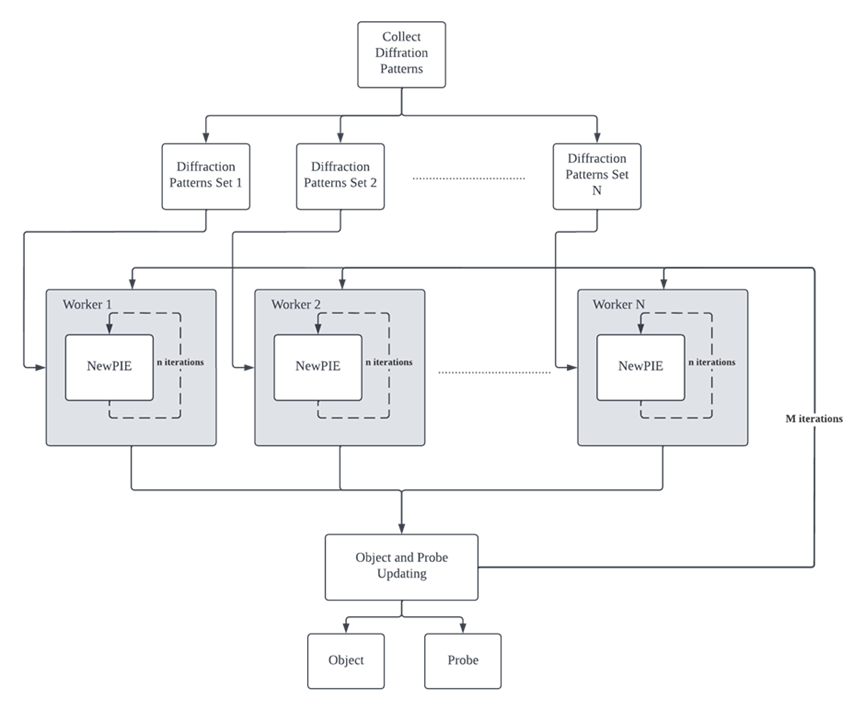Set projection algorithms for blind ptychographic phase retrieval
- Abstract number
- 264
- Presentation Form
- Poster & Flash Talk
- Corresponding Email
- [email protected]
- Session
- Poster Session One
- Authors
- Mr Wenjie Mei (1), Dr Andrew Maiden (1)
- Affiliations
-
1. The University of Sheffield
- Keywords
Set projection, ptychography, phase retrieval
- Abstract text
Ptychography is a powerful imaging technique that has been widely used in many fields. Set projection algorithms play a critical role in the reconstruction process of ptychographic data, and their performance greatly affects the accuracy and quality of the final images. Set projection algorithms are a critical component of ptychography, and their continued development and improvement will play a crucial role in advancing the field of ptychographic imaging.
Different set projection algorithms combine and iterate between the projections onto constraint sets in different ways. We investigate an overview of the main set projection algorithms used in ptychography, such as Divide and concur (DC), Average reflections (AR), Douglas Rachford (DR), Solvent flip (SF), Relaxed averaged alternating reflections (RAAR). The key parameters of these algorithms can be generalized as three parameters a, b, c but with different values in the equation below:
x(k+1)=aPbC PcD x(k+1)+(1-a) xk
Where PaSx denotes the relaxed projection of a point x onto a set S.
The first constraint set is the ‘consistency projection’ or ‘single-probe-and-object constraint’, the other one is the ‘modulus projection’ or Fourier constraint.
Figure.1 is a general flow diagram of the ‘abc’ ptychographic method, the computation starts with an initial guess of probe and object, then as normal ptychography does, form exit waves for all of the scan positions, then do the projections, finally update probe and object.
Figure 1. The flow chart of generalized set projection algorithm
Apart from these set projection algorithms, we present a new algorithm (temporarily called NewPIE) based on ePIE. The idea of Divide and concur (DC) is introduced into and combined with ePIE. The simulation results are shown below using big size probe which is 512 by 512 pixels.
Figure 2. The reconstruction results for set projection algorithms
Figure 3. The error lines of set projection algorithms
Different from ePIE, NewPIE has a product space update step which is running after all the positions solved. Due to this advantage of the global update step, NewPIE algorithm provides a parallel solution for ptychography. The idea is to distribute different diffraction patterns into different workers, see Figure 4. On each worker, it will run the NewPIE function for n iterations as flow diagram Figure 1 shown. After each worker completing all the assigned positions, it will come to ‘divide and concur’ part, which provides a relatively local update of product space. Since there are all zeros at each unrelated points on each worker, the final product space updating can be done by adding all the results from all the workers together. Eventually, similar to normal NewPIE, update object and probe guess, the new guess will be passed back to each worker for next parallel iteration.
Figure 4. NewPIE parallel updating model
- References
"Ptychographic X-ray phase imaging with a modulated source," J. Synchrotron Radiat. vol. 21, pp. 535-541, 2014.
"Advances in ptychographic X-ray imaging," J. Phys. D: Appl. Phys. vol. 49, pp. 013001, 2016.




